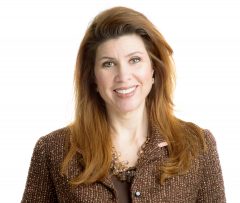 What makes a city grow? Ask regional transportation planners in North Texas, and they’ll tell you that one of the primary drivers of economic growth is concrete. More and more of it, by the laneful. If only we could add enough highways to solve our city’s congestion problems, Dallas’ economy would flourish, residents would flock here, and our air would sparkle. Without those precious additional lanes of freeway (and toll roads), Dallas is doomed to stagnation.
What makes a city grow? Ask regional transportation planners in North Texas, and they’ll tell you that one of the primary drivers of economic growth is concrete. More and more of it, by the laneful. If only we could add enough highways to solve our city’s congestion problems, Dallas’ economy would flourish, residents would flock here, and our air would sparkle. Without those precious additional lanes of freeway (and toll roads), Dallas is doomed to stagnation.
But building more freeways is like loosening your belt to solve a weight problem. Between 2001-2010, many lane miles were added to Dallas’ freeway system, yet our population growth was flat. The North Texas region, however, grew substantially. Bigger freeways encourage sprawl and push more people out to the suburbs. Those new lanes make it easier to move through our city, past our city, away from our city.
Regional transportation planners are inclined to ease suburban commutes at the expense of Dallas’ quality of life. You’ll notice that the word “Dallas” appears nowhere in their titles — they are regional planners. Their priority is regional mobility, not the prosperity of Dallas and our neighborhoods. They talk a good game of expanding alternative transportation options, of creating more walkable communities, of encouraging denser mixed-use development in our city center. But take one look at the state and federal dollars they funnel toward regional transportation projects, and you’ll see the vast majority of it goes toward massive freeway construction.
A couple of months ago, I spoke with Michael Morris, Director of Transportation for the North Central Texas Council of Governments. Morris is one of the most powerful voices in the region when it comes to transportation decisions. He guides policy and directs the flow of funding for large-scale transportation projects. He has been a stalwart advocate for the Trinity Toll Road, so you could say we haven’t always seen eye-to-eye when it comes to transportation issues. But I was still surprised by a statement Morris made in The Dallas Morning News about East Dallas.
Morris had written an op-ed in the paper against tearing down and boulevarding Interstate 345 — the stretch of I-45 between Woodall Rodgers and Central Expressway. In it, almost as an aside, Morris wrote that, “Consideration should also be given to a new ‘inner loop’ study that would address how to move traffic from I-35E to the Hospital District to Love Field, and on to the Dallas North Tollway, Central and I-30.” Take out a map, and he’s talking about building a freeway through East Dallas. After I picked up my jaw from the floor, I called him.
When I expressed my incredulity about such a proposition, Morris assured me that he wasn’t talking about an elevated freeway at all; he was thinking about a big tunnel. When I pressed him about where the tunnel would go and reminded him of the failed proposal to tunnel underneath Mockingbird in Highland Park, he quickly disabused me of the notion that the route would go through Highland Park: more likely through Oak Lawn. Farther east, Morris envisioned the tunnel running somewhere south of Mockingbird, north of I-30, west of the lake, and east of Central. That’s East Dallas, I told him. We don’t take kindly to massive transportation projects slicing through our neighborhoods (Haskell Avenue Alignment Project, anyone?). And it’s not hard to imagine a prohibitively expensive tunnel devolving into an elevated freeway to cut costs, leaving a massive, concrete scar through East Dallas and irrevocably damaging our neighborhoods.
By the end of the conversation, Morris assured me that I had persuaded him, and that he would drop the idea altogether. I’m not convinced. Our regional transportation model is stuck somewhere in 1954. Dallas needs progressive transportation planners who will stand up to the regionalists and focus on mobility options that will make our city a better place to live, not drive through.





